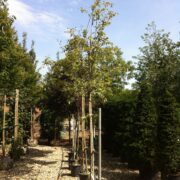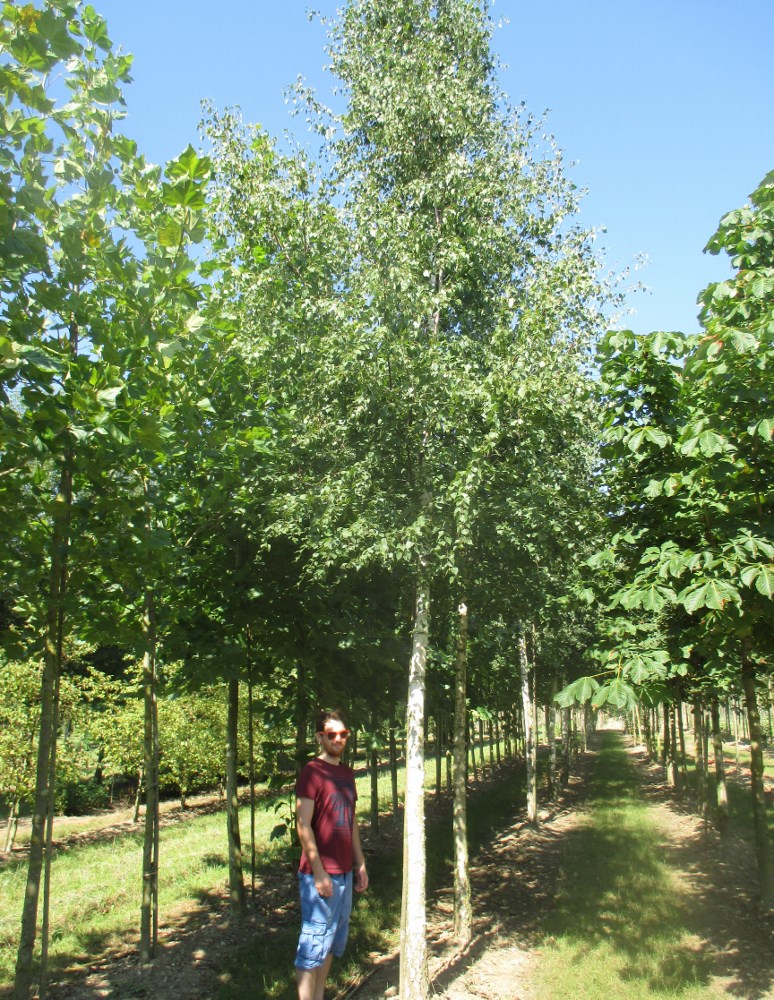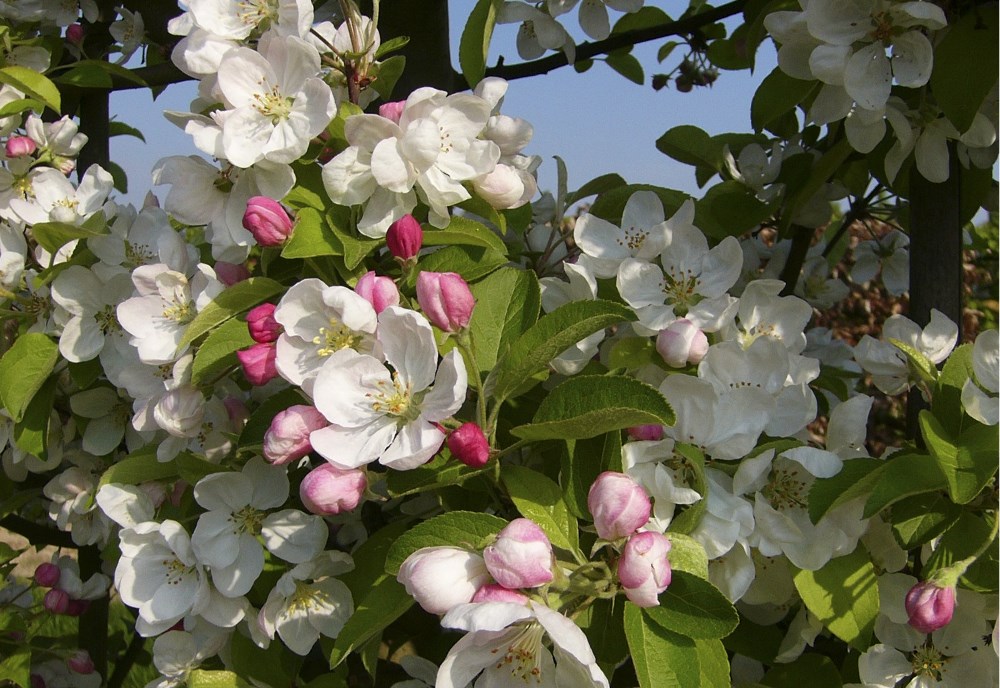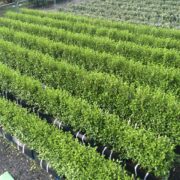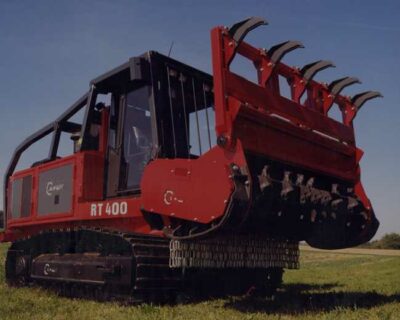Recommended Deciduous Trees
What are deciduous trees?
While evergreen trees keep their leaves all year round, deciduous trees lose their leaves in autumn. Deciduous trees usually have attractive features such as decorative bark, flowers, coloured foliage or autumn fruits, and their shape and form create height and structure within a garden, many of which make great trees for small gardens. One of the loveliest sights in autumn is the colour of leaves on deciduous trees as they turn red, orange and gold before being lost. The discarded leaves can be gathered up in autumn to make a nutritious leaf mould.
Trees can be immensely valuable for wildlife too, providing nesting sites as well as song posts and shelter for birds. Flowering trees attract pollinating insects, while autumn fruits, seeds and nuts provide food for a wide range of birds and mammals.
Tree sizes
We have a wide variety of semi-mature trees in a range of sizes:
- Girth measurement of 18cm to 100cm i.e. measurement around the tree stem at 1m high, for clear stemmed trees
- Heights of 2-12m for feathered trees
Our recommendation for the best deciduous trees to plant in your garden
Betula utilis ‘Jacquemontii’
Betula utilis Jacquemontii’ is a West Himalayan Birch, also known as Himalayan Birch or Kashmir Birch that is known for its bright white bark that peels each year. There are yellowy brown catkins in early spring up to 12cm in length and the delicate, dark green foliage turns golden yellow in autumn. A versatile tree which is tolerant of most soil types and can be planted effectively as a single focal specimen or in groups to exaggerate the effect of the gleaming white bark.
Ideal Conditions: Grows well in most soils, prefers a sunny location
Maximum Height: 18 metres
Betula pendula
The elegant Silver Birch Pendula produces light green foliage that shoots early and becomes orange-yellow in the autumn. In spring, it yields yellow catkins, around 5 cm in length. Its main branches are long and often grow horizontally, creating a semi weeping habit. This is a hardy tree which is frost resistant and regularly the first to grow back on bare or damaged land.
Ideal Conditions: Not suitable for conditions with compact soil, prefers to be in sun
Maximum Height: 20 metres
Prunus ‘Kanzan’
The Kanzan cherry tree is native to Japan, China and Korea. This beautiful flowering cherry produces an abundance of dark pink, densely filled blossom, which flower from deep red buds in May, making it a very popular variety. The large leaves appear red at first, and slightly darken before becoming a radiant green by summer. In autumn the foliage turns a coppery-yellow before falling. The RHS has given this tree an Award of Merit.
Ideal Conditions: Grows well in almost all well-drained soils
Maximum Height: 10 metres
Malus ‘Evereste’
Malus Evereste is a conical apple tree with delightful spring blossom. The flowers are red in bud but open white. In autumn it bears masses of red-flushed, orange-yellow fruits, which hang on through the winter. This variety is one of the most disease resistant crab apples, and will also tolerate pollution.
Ideal Conditions: Grows well in almost all well-drained soils. Full sun is preferred, although partial shade is tolerated
Maximum Height: 5-10 metres
Carpinus betulus
Carpinus betulus (Common Hornbeam) is a native tree. It’s bright green leaves turn bright yellow through to brown in the Autumn. Hornbeam often retains these brown leaves through the Winter and into the Spring. Left to its nature state in a parkland setting, Hornbeam grows to be a large tree and looks good in groups. However, it can be pruned and clipped into shape. It is a tough tree and regenerates well.
Ideal Conditions: Tolerates a wide range of conditions.
Maximum Height: 12m+
Amelanchier lamarkii
Amelanchier lamarckii is an attractive tree for all seasons. In spring, its at its most beautiful whilst in bloom, with vast amounts of white, star-shaped flowers. From July to September, it yields small, rounded fruits, which are a deep red in colour and sweet in flavour. Its leaves emerge as a russet shade, changing to green by spring and then to an orange/scarlet as autumn advances. It is a hardy plant that is frost resistant and has been given the Award of Garden Merit (AGM) by the Royal Horticultural Society.
Ideal Conditions: Moist-to-dry, well-drained, lime free soils
Maximum Height: 5-7 metres
Tips on planting deciduous trees
- Autumn, winter and early spring are the best times to plant trees, so they can settle in and make root growth without the stress of supporting leafy growth
- During the dormant season, the range of trees available is wider as they can be bought bare-rooted – dug up straight from nursery fields – with the bonus of avoiding plastic pots
- Container grown trees can be bought and planted in spring and summer but must be kept watered during their first growing season
- Always plant a tree at the same depth as it was growing previously. Put a piece of wood across the hole to get the level right
- Stake and tie the tree for the first couple of years until well rooted
If you need assistance we can also plant the trees we supply.
More Information
If you would like to know what tree might be suitable for your garden, contact our Horticultural team who will be able to advise you.
- Betula pendula
- Betula utilis jacquemontii
- Malus Evereste bloom
- Carpinus betulus

